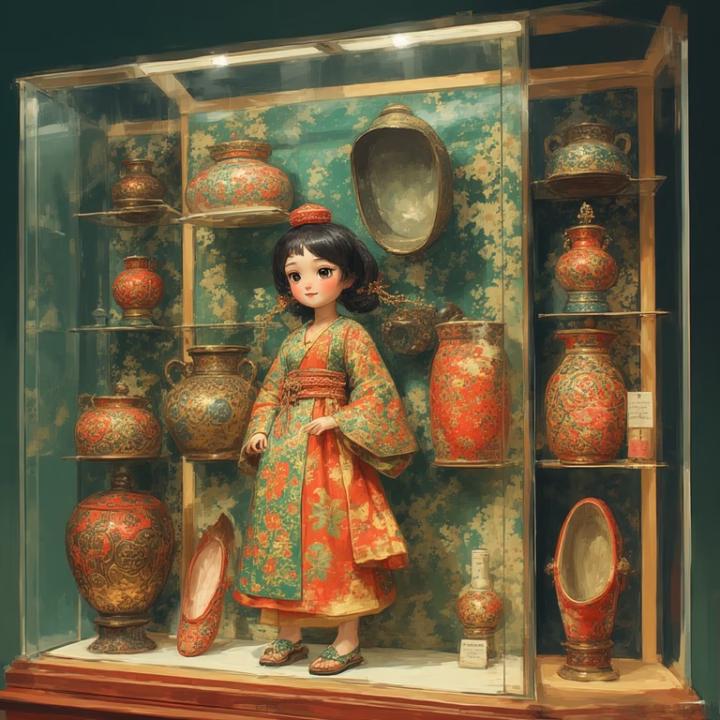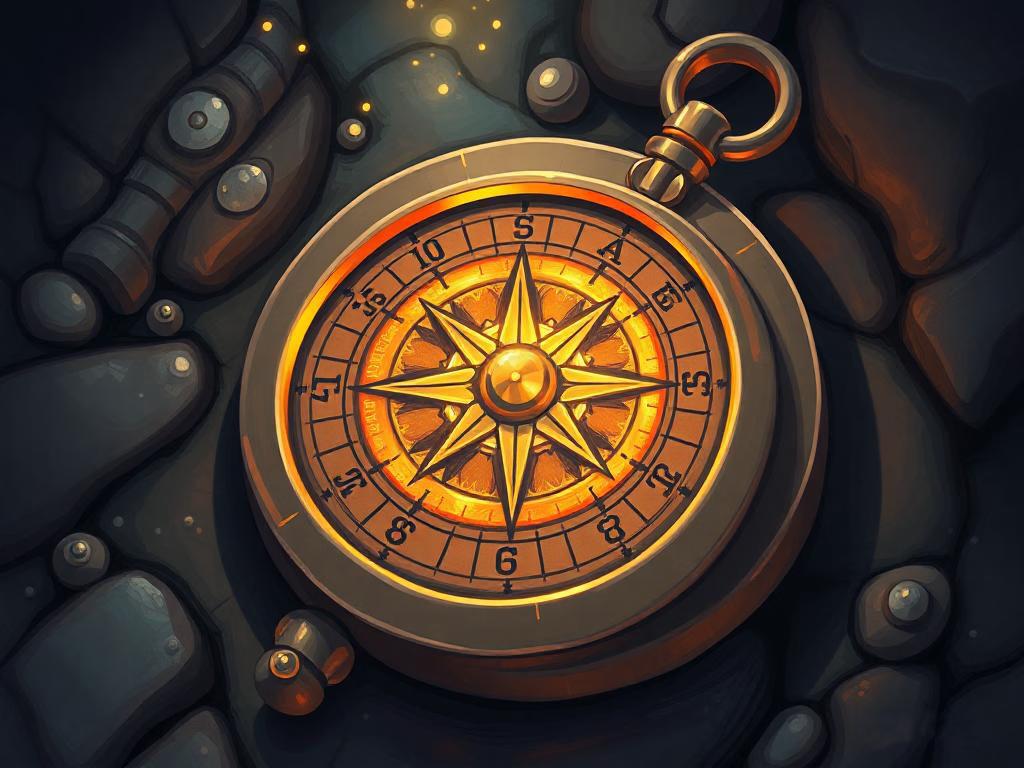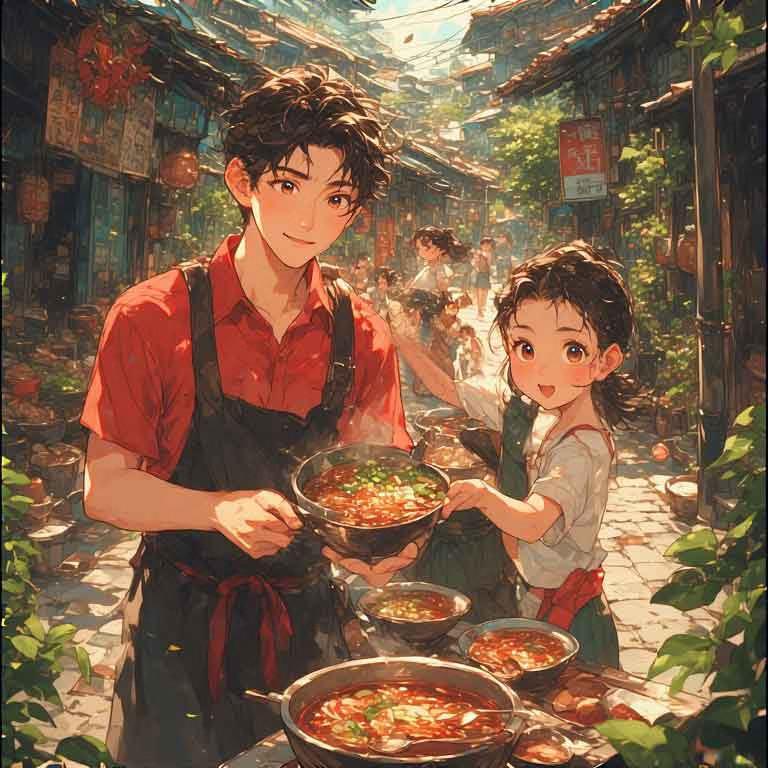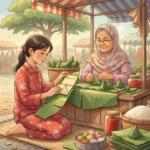
Prologue: The Eyes That Remember
In a glass case at the Penang Peranakan Museum, nestled between beaded slippers and antique kueh molds, sits a doll unlike any other.
She is made of porcelain, her face delicately painted with almond-shaped eyes, rouged cheeks, and lips curved in a faint, knowing smile. Her hair is jet-black, drawn into an elaborate coiffure adorned with gold pins shaped like phoenixes. She wears a kebaya of hand-embroidered silk, its floral patterns stitched with threads of crimson, jade, and sapphire—each petal a whisper of history. Her name, once whispered in a child’s lullaby, is Lily.
But Lily is not just a doll. She is a vessel.
For over a century, she has passed from hand to hand, home to home, heart to heart. And though she cannot speak, she sees. She remembers.
This is her story.
1. 1898 – The Birth of Lily
Lily was born in a sunlit courtyard of a shophouse on Armenian Street, crafted by a Chinese artisan for a wealthy Peranakan family. Her first owner was Anna, a ten-year-old girl with restless curls and a voice like a wind chime. Anna’s mother, Madam Ong, had commissioned the doll from a master craftsman in Malacca, insisting on every detail: the songket skirt, the tiny kerosang brooch, the exact shade of peony pink on her cheeks.
“She must be perfect,” Madam Ong said. “She will carry our name.”
Anna adored Lily. She dressed her in miniature versions of her own clothes, told her secrets beneath mosquito nets, and placed her beside her every night. Lily watched as oil lamps flickered and nyonya kueh cooled on lacquered trays. She heard the clatter of horse carriages and the distant call of the kampung rooster.
But in 1905, when Anna was betrothed to a man from Singapore, she left Lily behind.
“I can’t take you,” Anna whispered, pressing the doll to her chest. “You belong here. With them.”
Lily remained, placed on a high shelf in the ancestral hall—watching, waiting.
2. 1937 – War Comes to the Straits
By the time Eddy, Anna’s grandson, discovered Lily in the attic, the world had changed.
He was twelve, sharp-eyed and curious, with a habit of sneaking into forbidden rooms. The war loomed like a storm cloud over Malaya. His father, a shipping clerk, spoke in hushed tones about Japanese troops moving south.
Eddy found Lily wrapped in yellowed silk, tucked inside a teak chest engraved with peonies. Her kebaya was faded, one brooch missing. But her eyes—those painted eyes—still held a quiet fire.
“She’s beautiful,” he said, brushing dust from her sleeve.
That night, he smuggled her to his room. He told her about school, about his crush on Mei Ling from the grocery shop, about his fear that the war would take his father. Lily listened in silence.
When the bombs fell on George Town in 1941, Eddy clutched Lily as the family fled to a village in the hills. They hid in a rubber plantation, living on tapioca and rainwater. One evening, as Japanese soldiers marched through the nearby road, Eddy buried Lily beneath a frangipani tree.
“I’ll come back for you,” he promised.
He did—three years later, after the war ended, his father never returning. He dug her up, cracked at the elbow, but intact. He wept.
“She survived,” he told his mother. “So can we.”
3. 1965 – The Girl Who Loved Stories
Vivian, Eddy’s daughter, was born in a newly independent Malaysia. She was quiet, bookish, with a love for stories her father could not understand.
He gave her Lily on her eighth birthday.
“She’s been through a lot,” Eddy said. “Just like us.”
Vivian named her Lily after the flower, not knowing it was her original name. She wrote stories about the doll—adventures in secret gardens, escapes from pirates, friendships with penanggalan and orang minyak turned kind. She placed Lily on her desk as she studied for exams, whispering, “Help me pass, tok tok.”
In 1978, Vivian left for London to study anthropology. She packed Lily carefully in her suitcase.
“She’s part of my heritage,” she told customs when they questioned the antique doll.
In England, Lily sat on a windowsill in a tiny flat in Camden, watching snow fall for the first time. She saw Vivian fall in love with a Scottish poet named Pye, argue with him, cry over him, then marry him anyway. She saw the birth of Emma, their daughter, born with one foot in two worlds.
When Emma was three, Vivian returned to Penang, bringing Lily home.
“She belongs here,” Vivian said. “With the memories.”
4. 1998 – The Festival of Lights
Emma was different.
Born in Glasgow, raised in Penang, she spoke English with a lilt, Malay with hesitation, and Hakka only in kitchen phrases. She loved K-pop and laksa, Instagram and kueh salat. She didn’t believe in spirits—but she felt something when she first held Lily.
“She’s… watching me,” she told her mother.
Vivian smiled. “Good. Then she knows you.”
Emma was sixteen during the 1998 George Town Festival. The city was alive with dondang sayang performances, batik parades, and projections on colonial walls. Emma, assigned a school project on cultural preservation, decided to write about Lily.
She interviewed her grandmother, dug through old photo albums, even visited the Malacca doll maker’s grandson, who confirmed the craftsmanship.
“She’s rare,” he said. “One of the last of her kind.”
Emma’s project won first prize. At the ceremony, she placed Lily on the table beside her.
“She’s not just a doll,” Emma said in her speech. “She’s a witness. She saw war. She saw love. She saw us change. And she stayed.”
Afterward, a Japanese tourist approached her—Hyuga, a historian from Kyoto.
“This doll,” he said softly, “reminds me of my grandmother’s ningyō. We forget too easily what our hands once held.”
Emma gave him a copy of her essay.
Lily, between them, seemed to smile.
5. 2023 – The Last Keeper
The house on Armenian Street had been sold.
Vivian had passed in 2020. Eddy, now ninety-two, lived in a care home, murmuring names from the past.
Emma stood in the empty shophouse, Lily in her arms. The walls were bare, the scent of old wood and attar fading.
She had a choice.
Keep Lily in her condo in Kuala Lumpur, where her own daughter, Bell, a five-year-old with wild curls and a love for dolls, could play with her.
Or give her to the museum.
Bell had already broken two antique vases.
That night, Emma dreamed of Anna, Eddy, Vivian—standing in a garden, passing Lily from one to another like a sacred flame.
In the morning, she called the Penang Peranakan Museum.
Epilogue: The Glass Case
Now, Lily rests in the museum, labeled:
“Peranakan Doll, c. 1898. Passed through four generations of the Ong family. Witness to war, migration, love, and resilience. A symbol of cultural continuity in a changing world.”
Children press their noses to the glass.
“Is she real?” one asks.
“Yes,” says a guide. “She’s seen more than any of us.”
Outside, the rain falls on Penang’s streets—on trishaws, on street art, on the kuih stalls of Gurney Drive. The city pulses with life, a blend of old and new, Malay, Chinese, Indian, Peranakan—a tapestry of voices.
And Lily watches.
She sees Bell, now eight, visiting with her mother. Emma points to the case.
“That’s her,” Emma says. “Our Lily.”
Bell tilts her head. “She looks like she wants to say something.”
Emma smiles. “Maybe she already has.”
That night, the museum closes. The lights dim.
In the silence, a single beam of moonlight falls across the glass.
And for just a moment—no one sees it—Lily’s hand shifts. Not much. Just a tilt of the wrist, as if adjusting her sleeve.
As if to say: I am still here.
I remember.
I remain.
Note:
The Peranakan (or Straits Chinese) culture is a unique blend of Chinese, Malay, and colonial influences, particularly strong in Penang, Malacca, and Singapore. Their traditions—language, cuisine, fashion, and craftsmanship—are a testament to centuries of cultural fusion. This story honors that legacy through the metaphor of a doll: fragile, enduring, and deeply human in her silence.
Lily is not alive—but the memories she carries are.
And as long as someone remembers, the past is never truly gone.
The End.










